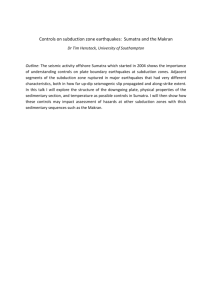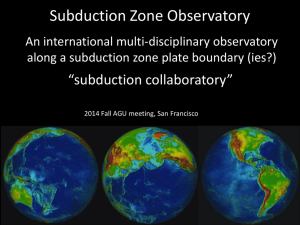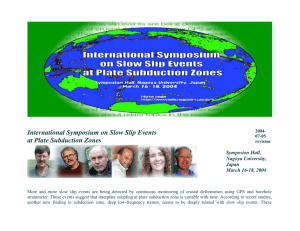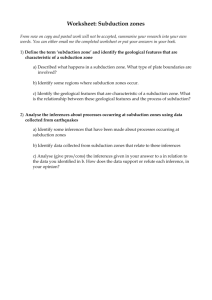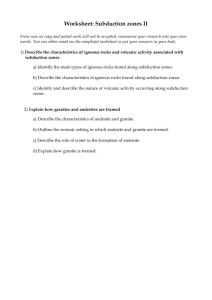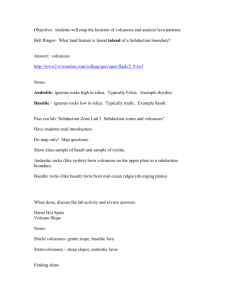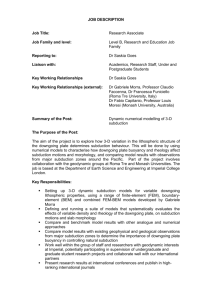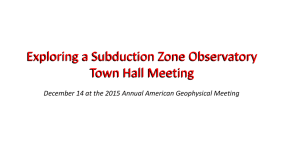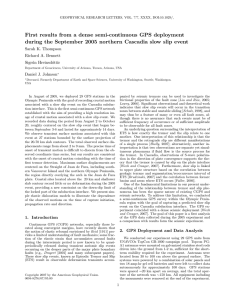Subduction Zone Observatory
advertisement
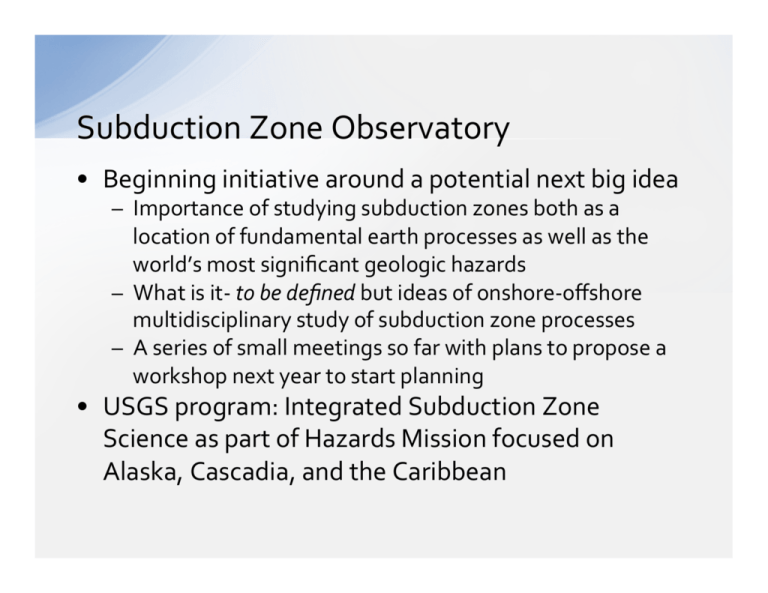
Subduction Zone Observatory • Beginning initiative around a potential next big idea – Importance of studying subduction zones both as a location of fundamental earth processes as well as the world’s most significant geologic hazards – What is it-­‐ to be defined but ideas of onshore-­‐offshore multidisciplinary study of subduction zone processes – A series of small meetings so far with plans to propose a workshop next year to start planning • USGS program: Integrated Subduction Zone Science as part of Hazards Mission focused on Alaska, Cascadia, and the Caribbean Subduction Zone Observatory • Slow slip questions from early career scientists Bartlow and Dimitrova: Slow-­‐slip triggered Eqs? SSE foreshock swarms for prediction? – Shallow or even near trench slow-­‐slip events and what is relation with tsunami Eqs? – Slip budgets-­‐ do SSEs take up whole slip deficit? How much of a SZ is really locked, what range of locking fits data, and how we quantify uncertainty – Links between tremor and SS and over what temporal and spatial scales-­‐ must monitor tremor and slip! • Opportunities for greater use of borehole strainmeters Subduction Zone Observatory • What are the important questions / considerations as we progress towards a workshop? – For understand fundamental process of fluid role in SZ processes could consider 3D MT offshore as well as geodetic – Structural controls on slow-­‐slip as well as understanding the medium that slip takes place in – GeoPrisms questions can be used to provide information for this program and haven’t been answered yet…so do we restate / redesign? Maybe not worry as we have only just started – Observatory is much more than just an bunch of instruments but the people who are also looking at analogues and thus a broader concept – From NSF: drive this with questions; strongly encourage including a broader community of geoscientists early to allow for organic integration Subduction Zone Observatory • What are the important questions / considerations as we progress towards a workshop? – Bridging between high-­‐fidelity images mostly offshore and higher density arrays mostly onshore and need for bridging scales and resolutions – Targeting different timescales of deformation/motion – Examine transitions in types of subduction behavior in a larger systems approach (along strike, down dip, and temporally)-­‐ similar arguments can out from GeoPrisms workshops – What about deeper parts of a SZ such as fate of slab, geochemical implications, etc. – need to link with shallow Subduction Zone Observatory • What are the important questions / considerations as we progress towards a workshop? – International interaction could be so very important; There was a related workshop held by IRIS in Chile recently as follow-­‐up to Maule EQ and information can be gathered from website – There are more stations along the central and SA SZs then currently being accessed by the US SZ community and we need to create collaborations both with those in those countries and those already work on those countries

